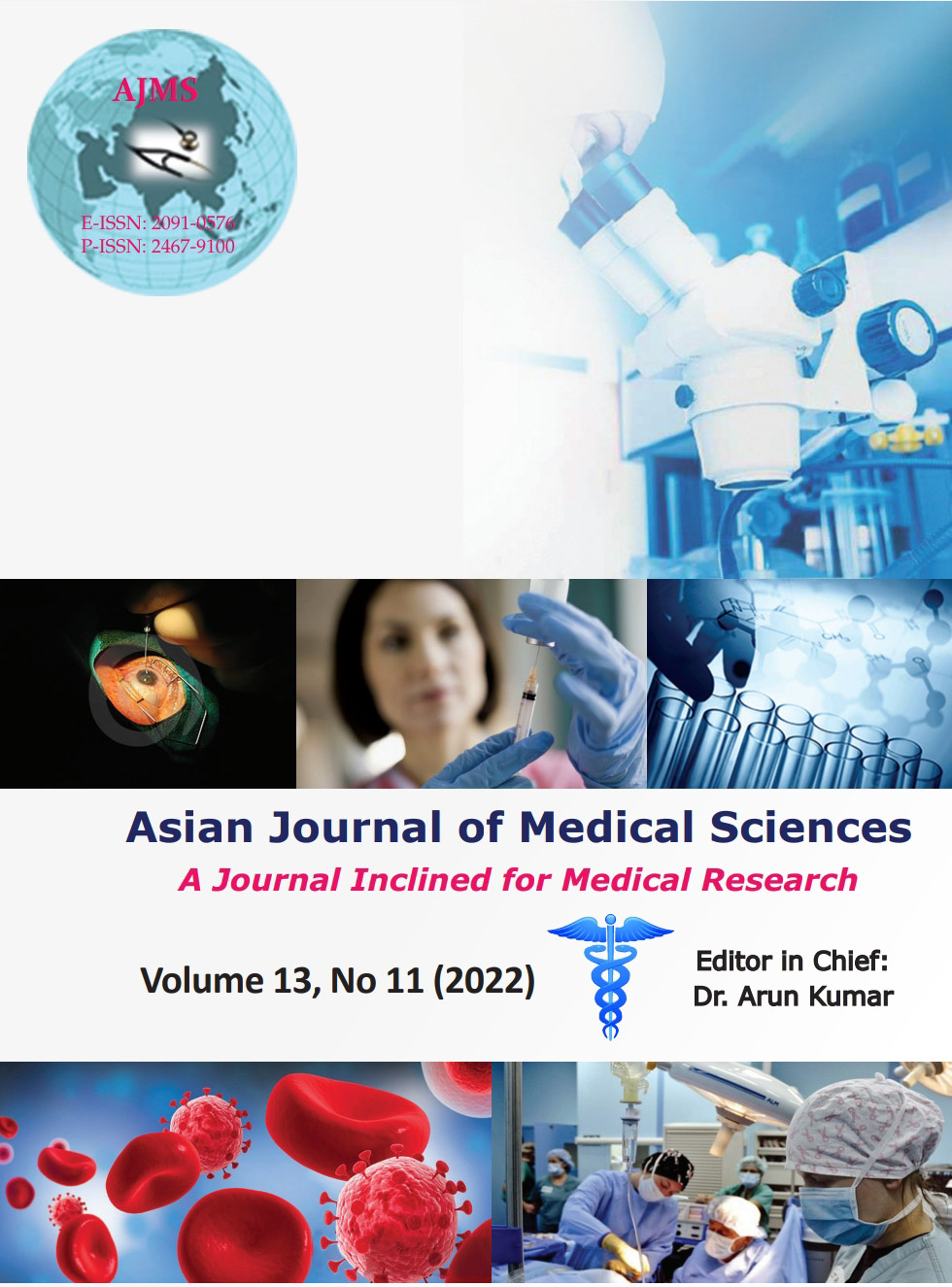Role of S-100 stain for demonstration of different patterns of nerve changes in spectrum of leprosy – A prospective study
Keywords:
Borderline tuberculoid leprosy; Granuloma; S-100; Tuberculoid leprosyAbstract
Background: A confirmatory diagnosis of tuberculoid (TL) and borderline TL (BTL) leprosy is dependent on the demonstration of nerve involvement within granuloma or acid-fast bacilli. It is very difficult to identify nerve elements in hematoxylin and eosin (H&E) stains. S-100 stain in this study is used to highlight nerve in TL leprosy so as to reach a definitive diagnosis of TL leprosy.
Aim and Objectives: The aim of the study was to demonstrate nerve involvement and various changes of nerves in different forms of leprosy and use of S-100/or confirmation of TL leprosy/BTL leprosy.
Materials and Methods: Skin biopsies of a total of 53 cases of leprosy were studied. The study is conducted in the department of pathology, HIMS, Safedabad, Barabanki U.P. The present study included all the new leprosy patients visiting the outpatient department of Skin and V.D, department, HIMS, Safedabad, Barabanki, U.P. Study period was 2015–2016 (1 year). All biopsies were studied in H&E stain. Biopsies were further subjected to S-100 stain so as to make a confirmatory diagnosis of TL leprosy/BTL and were then classified according to Ridley-Jopling classification only histological parameters of classification were used in this study.
Results: In the present study, it was observed that the majority of patients were between the ages of 31 and 40 years (39.5%), males were mostly affected (10.5%), and family history was positive (8.4%). Hypopigmented skin lesion was the most common clinical lesion (31.2%).TT was the most common clinical diagnosis (25.4%). IL was the most common histopathological diagnosis (26.1%). The nerve changes were demonstrated in TL/BTL leprosy using S-100 immunostain. It was observed that the most of the cases of TL/BTL demonstrated fragments of nerves that were infiltrated by lymphocytes. This was the most common pattern seen among the patients of TL/BTL leprosy. Complete nerve was not identified in any of the cases.
Conclusions: S-100 immunostain simplified detection of nerve twigs in TL/BTL leprosy. It was also seen that the most of the fragmented nerve elements were present within the granulomas. The TL spectrum of leprosy significantly affected nerves and using S-100 helped in differentiating it from other forms of leprosy.
Downloads
Downloads
Published
How to Cite
Issue
Section
License
Copyright (c) 2022 Asian Journal of Medical Sciences

This work is licensed under a Creative Commons Attribution-NonCommercial 4.0 International License.
Authors who publish with this journal agree to the following terms:
- The journal holds copyright and publishes the work under a Creative Commons CC-BY-NC license that permits use, distribution and reprduction in any medium, provided the original work is properly cited and is not used for commercial purposes. The journal should be recognised as the original publisher of this work.
- Authors are able to enter into separate, additional contractual arrangements for the non-exclusive distribution of the journal's published version of the work (e.g., post it to an institutional repository or publish it in a book), with an acknowledgement of its initial publication in this journal.
- Authors are permitted and encouraged to post their work online (e.g., in institutional repositories or on their website) prior to and during the submission process, as it can lead to productive exchanges, as well as earlier and greater citation of published work (See The Effect of Open Access).




